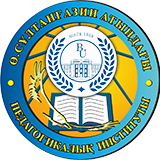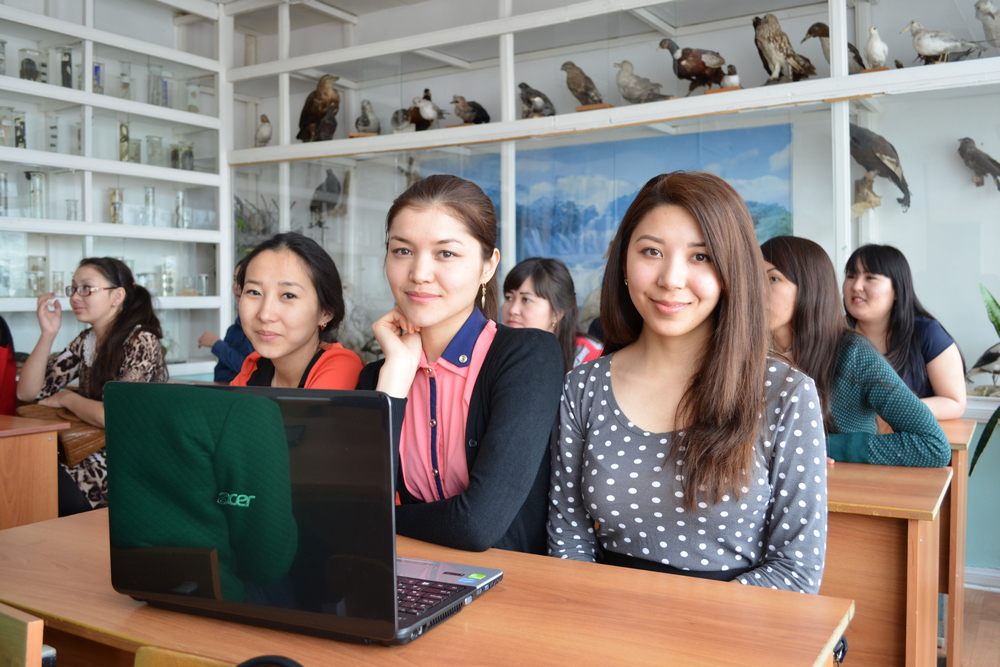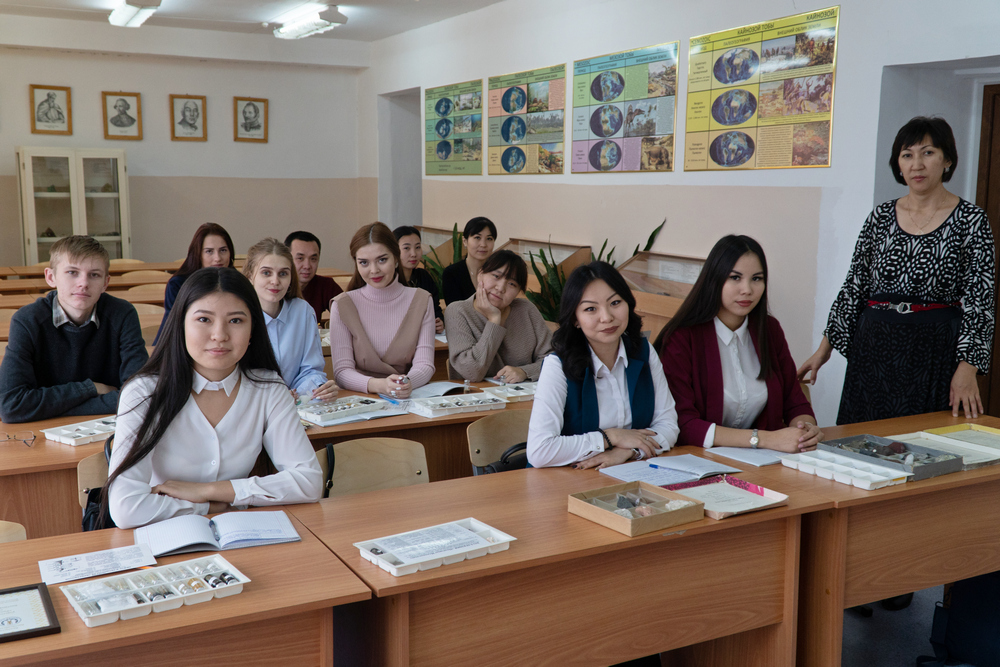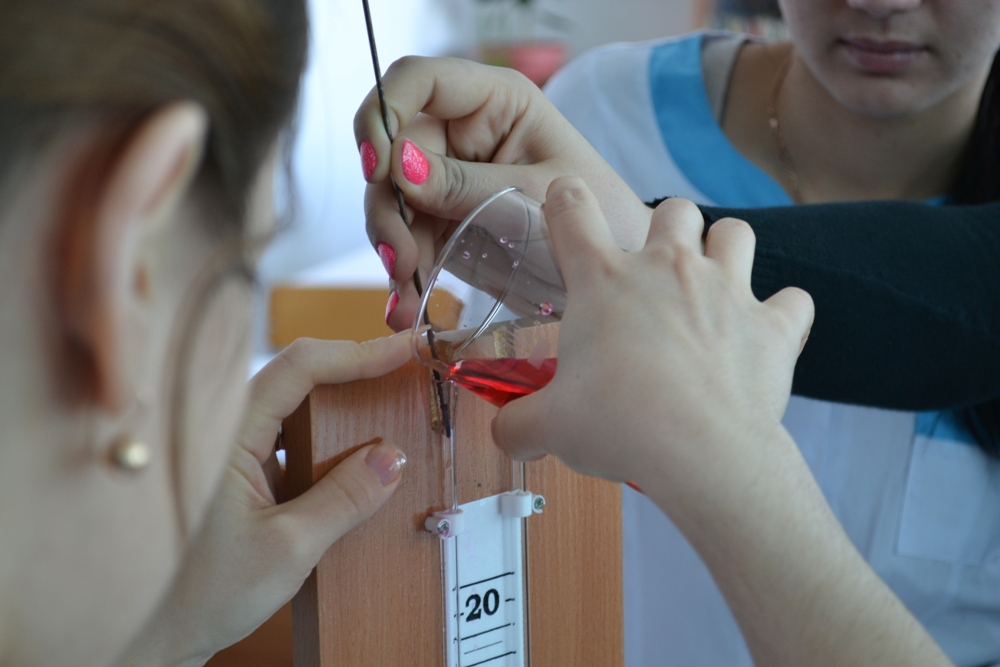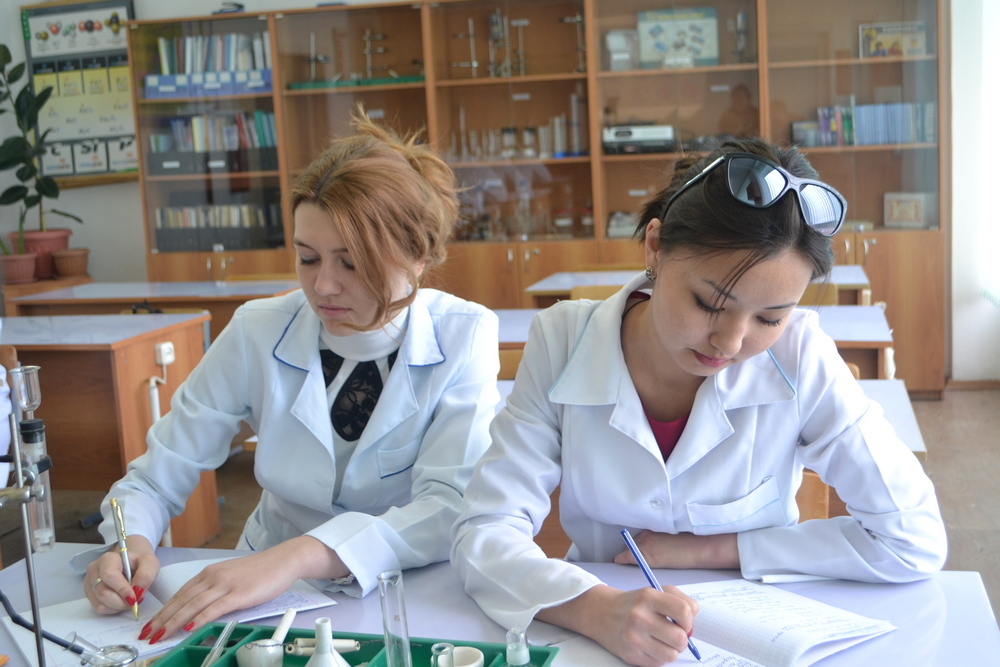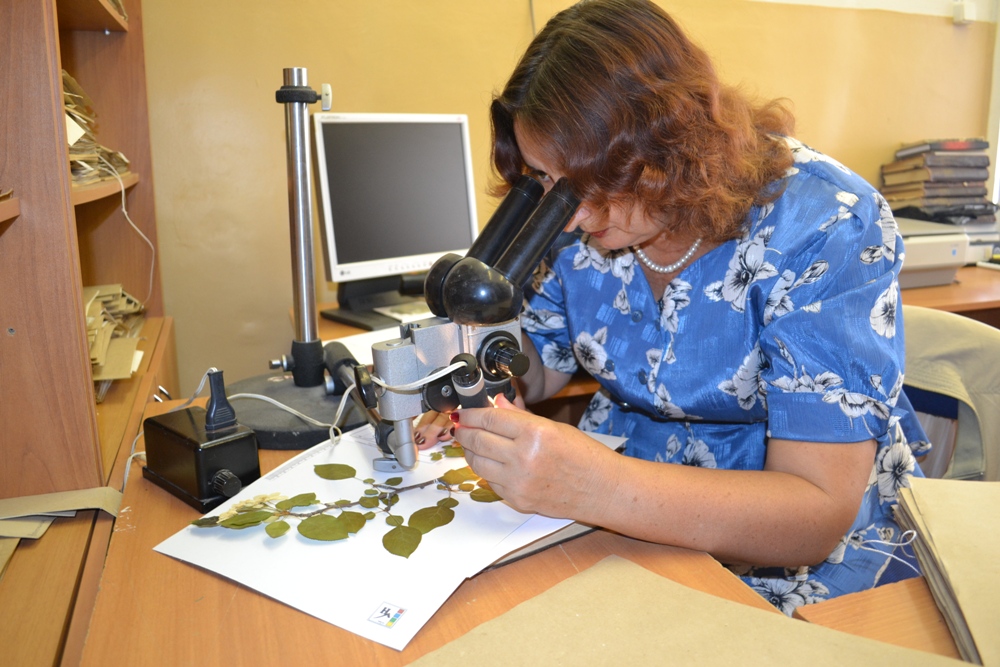Human Physiology and Anatomy Laboratory
Room number 701
Area 51.6 sq.m
Date of organization of the cabinet 2004
The laboratory is designed to study human anatomy and physiology, the structure of organs, the body as a whole and the life processes of the body. Laboratory work on human anatomy and physiology is also carried out, as well as experimental research work of students. The laboratory is equipped with anatomical models of human organs and systems.
Laboratory of Vertebrate Zoology
Room number 705
Area 49.1 sq.m
Date of cabinet organization 1980
The Laboratory of Vertebrate Zoology is designed to conduct laboratory classes on vertebrate zoology, ecology and the basics of life safety, evolutionary teaching, protected and disturbed areas, monitoring and restoration of the natural environment. In addition, cameral processing of material collected during field practices is carried out here. The audience has visual aids represented by wet preparations, stuffed animals, an osteological set on vertebrate zoology.
Plant Anatomy and Morphology Laboratory
Room number 710
Area 49.3 sq.m
Date of organization of the cabinet 2004
The laboratory is designed to study the anatomy and morphology of plants, the taxonomy of lower and higher plants by keeping an electronic observation diary, working with binoculars and photo attachments that allow photographing and making videos of observed microscopic objects.
The resulting material is used for educational and research work. In the laboratory, training sessions are carried out in the disciplines of the botanical cycle, and scientific research is carried out. Here students determine the mechanical and chemical composition of soil samples, dry and process the herbarium, identify plants collected on excursions during field practice and as a result of individual scientific projects.
Laboratory of methods of teaching geography and cartography with the basics of topography
Room number 714
Area 50.1 sq.m
Date of organization of the cabinet 2004
The classroom is intended for lectures, practical classes in the disciplines - methods of teaching geography, cartography with the basics of topography. When conducting practical classes, students use the equipment of the Geography classroom, hemorphological, geological models, as well as geodetic instruments - theodolite, nevelir.
Biology Laboratory (Public Use)
Room number 716
Area 49.6 sq.m
Date of organization of the cabinet 2004
Laboratory named after academician Temirbai Baibosynovich Darkanbaev. The laboratory is intended for carrying out laboratory work in applied biology with the basics of soil science, microbiology and virology, as well as setting up experimental and research work of students. Students study the composition of soils, the determination of hygroscopic moisture in the soil, the exchange and actual acidity of the soil, etc. On modern equipment, the concentration and optical density of the solution are determined, cultures of microorganisms are grown.
Biology Teaching Methods Laboratory
Room number 718
Area 50.6 sq.m
Date of organization of the cabinet 2024
The educational laboratory of biology teaching methods was completed in March 2024, as part of a project by the Ministry of Science and Higher Education of the Republic of Kazakhstan.
The biology room contains all the necessary textbooks and devices. As well as modern and technical solutions. The technical specification of the cabinet is compiled in accordance with the requirements of the State Mandatory Standard of Secondary general Education of the Republic of Kazakhstan, Standard rules of activity of educational organizations implementing educational programs of secondary general education, Sanitary rules and norms "Sanitary and epidemiological requirements for the device, content and conditions of education in general education and boarding schools."
The biology classroom is the material base of the educational process, where biology lessons, laboratory and practical work, elective and group classes are held and extracurricular tasks are performed.
Plant Physiology Laboratory
Room number 720
Area 49.6 sq.m
Date of organization of the cabinet 2004
The laboratory is intended for carrying out laboratory work on plant physiology, as well as staging experimental and research work of students in summer training practice, final qualifying works. In this laboratory, students conduct a series of works on the study of plant cells, water metabolism of plants, mineral nutrition, photosynthesis, respiration of plants, determining their resistance to adverse environmental conditions.
Botany and Cytology Laboratory
Room number 724
Area 49.9 sq.m
Date of organization of the cabinet 2004
The laboratory is designed to study the anatomy and morphology of plants, the systematics of lower and higher plants. The laboratory conducts training sessions in the disciplines of the botanical cycle, and scientific research. Here, students dry and process the herbarium, identify plants collected on excursions during field practice and as a result of individual scientific projects.
Laboratory of Zoology of Invertebrate Animals
Room number 725
Area 67.5 sq.m
Date of cabinet organization 1980
The classroom - the laboratory of invertebrate zoology is used for conducting classroom, laboratory and seminar classes in the disciplines of the natural cycle - Zoology of invertebrates, Soil zoology, Introduction to entomology, and is also used for classes and processing materials during training field practices, defending term papers and independent work and others.
The laboratory has a preparation room with a fume hood, racks for storing educational and scientific collections. Classes are conducted using modern laboratory equipment (binocular microscopes, equipment for ITC), collection materials on regional fauna, expositions, photo and video materials, posters and diagrams.
Laboratory of Analytical Chemistry
Room number 804
Area 67.7 sq.m
Date of cabinet organization 1980
The laboratory conducts laboratory and practical classes in analytical chemistry (an extensive workshop on qualitative and quantitative analysis) of the specialty 6B01504 - Chemistry. The preparatory room is adjacent to the laboratory, as a necessary element of analytical studies.
Laboratory of methods of teaching chemistry and methods of conducting a school chemical experiment
Room number 806
Area 48.3 sq.m
Date of cabinet organization 1980
The laboratory carries out:
- demonstration experiments, laboratory and practical exercises in the system of teaching chemistry;
- studying the features of laboratory work and practical classes in chemistry in high school. Safety engineering. The methodology for conducting laboratory experiments and practical exercises provided for by the program of the school course in chemistry.
- demonstration experiments provided for by the program of the school chemistry course. The main requirements for instruments and installations used in the demonstration of chemical experiments: tightness, compactness and visibility.
Research laboratory of the specialty "Chemistry"
Room number 808
Area 14.8 sq.m
Date of cabinet organization 1980
The laboratory conducts research work of students, term papers and theses.
Analysis of environmental objects:
- analysis of air and soil;
- phytochemical evaluation of medicinal plants;
- food analysis;
- analysis of water resources in the Kostanay region.
Laboratory of General and Inorganic Chemistry
Room number 809
Area 49.3 sq.m
Date of cabinet organization 2024
The educational Laboratory of General and Inorganic Chemistry was completed in March 2024, as part of a project by the Ministry of Science and Higher Education of the Republic of Kazakhstan.
The chemistry room contains all the necessary textbooks and devices. As well as modern and technical solutions. The technical specification of the cabinet is compiled in accordance with the requirements of the State Mandatory Standard of Secondary general Education of the Republic of Kazakhstan, Standard rules of activity of educational organizations implementing educational programs of secondary general education, Sanitary rules and norms "Sanitary and epidemiological requirements for the device, content and conditions of education in general education and boarding schools."
The chemistry room is the material base of the educational process, where chemistry lessons, laboratory and practical work, elective and group classes are held and extracurricular tasks are performed.
Laboratory of Physical Geography
Room number 811
Area 47.2 sq.m
Date of organization of the cabinet 2004
This classroom is intended for conducting practical classes in the disciplines - soil geography with the basics of soil science, landscape science. In laboratory classes, students use special devices (soil samples, flasks, sieves, solutions, etc.), which determine the mechanical composition of the soil, study herbariums. Materials collected by students during field practices are used in the classroom.
Laboratory of Geology and General Geography (Mineralogical Museum)
Room number 814
Area 67.4 sq.m
Date of organization of the cabinet 2004
The educational laboratory is intended for conducting laboratory, practical classes in the disciplines - geology, general geography. Students in practical and laboratory classes use models of geological processes, mineral collection material, collections of minerals, models.
Laboratory of Physical and Colloidal Chemistry
Room number 815
Area 50.8 sq.m
Date of cabinet organization 1980
Workshops on physical, colloidal and computer chemistry are held:
- Laboratory workshop on physical chemistry;
- Laboratory workshop on colloid chemistry;
- Laboratory workshop on computer chemistry;
- Laboratory workshop on physical methods of chemical research.
Laboratory of Biochemistry and Chemistry of Macromolecular Compounds
Room number 817
Area 65.5 sq.m
Date of cabinet organization 1980
The laboratory conducts laboratory and practical classes in biochemistry, food analysis, chemistry of macromolecular compounds. The workshops in the listed disciplines include experimental work on the qualitative and quantitative determination of natural compounds. The work plan provides for the study of the chemical composition of living organisms, carrying out reactions to detect proteins, carbohydrates and their derivatives, lipids, mineral compounds, and studying the properties of enzymes. An experimental determination of the composition of food products is carried out.
Chemical Technology Laboratory
Room number 821
Area 49.4 sq.m
Date of cabinet organization 1980
The laboratory conducts laboratory and practical classes in chemical technology. Oil distillation. Electrolysis. Obtaining products of dry distillation of wood, etc. Technological and technical and economic indicators. The most important technological concepts and definitions. Natural reserves. Mining methods, processing methods, areas of use of products and the chemical industry.
Laboratory of Organic Chemistry
Room number 826
Area 51.0 sq.m
Date of cabinet organization 1980
Laboratory 826 conducts laboratory and practical classes on the theoretical foundations of organic chemistry (specialty 6B01504-Chemistry), chemistry of functional derivatives of organic molecules (specialty 6B01504-Chemistry), as well as laboratory work on phytochemistry.
Stock material
Herbarium collections in the Akmola region within the national natural park "Burabay" were carried out by students of the specialty "5B060700-Biology" under the guidance of Professor Sultangazina G.Zh. in 2010-2020 and make up more than 5000 herbarium sheets. The collection of vascular plant species is represented by 500 species. In a smaller volume, samples of bryophytes and lichens are presented.
The Entomological Museum of the Department of Biology and Chemistry is a scientific and educational center for the study of the entomofauna of the Kostanay region and is the base for specialists involved in entomology and plant protection. About 25 thousand different insects are stored in the museum funds. On the basis of the entomological museum, laboratory and practical classes are held, which allow conducting research with special equipment and a rich entomological fund. Since 2012, the Entomological Museum has been a member of the Association of Museums of Eurasian Universities.
Under the guidance of Candidate of Biological Sciences, Professor Perezhogin Yu.V. the scientific subdivision Herbarium was created. It has been reformed and brought to the standard of world requirements, and is currently one of the largest Herbariums in Northern Kazakhstan.
Based on the results of paleontological work devoted to the study of the development of flora and fauna, the Museum of Natural History has been operating since 2011, which includes unique finds in the Turgai region.
The site has the following electronic projects prepared by Professor Perezhogin Yu.V. and Professor Bragina T.M. with a team of authors:
- Biodiversity Research Center https://rcb.kspi.kz/
- Information portal "Flora of the Urals and Kazakhstan" https://herbarium.kspi.kz/
- Paleontological heritage of Kazakhstan https://paleokz.kspi.kz/
- Research Center for Problems of Ecology and Biology https://nic-peb.kspi.kz/ru/
- Virtual encyclopedia of the steppes (Kazakhstan) https://steppes.kspi.kz/
- Altyn Dala State Natural Reserve https://altyndala.kspi.kz/

